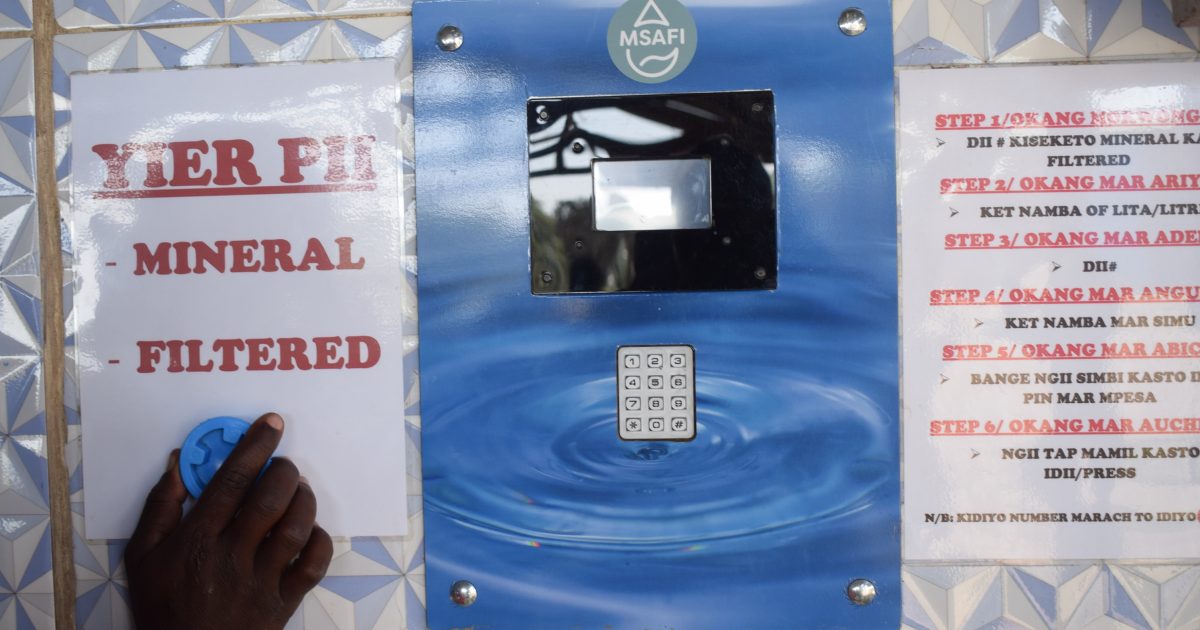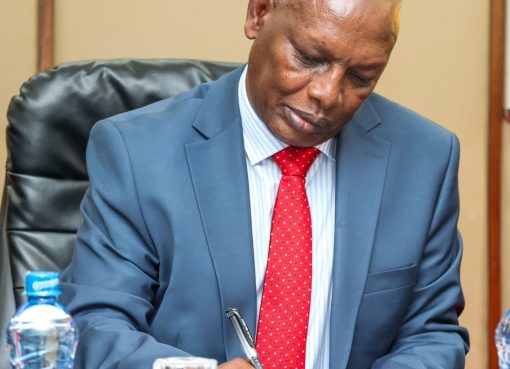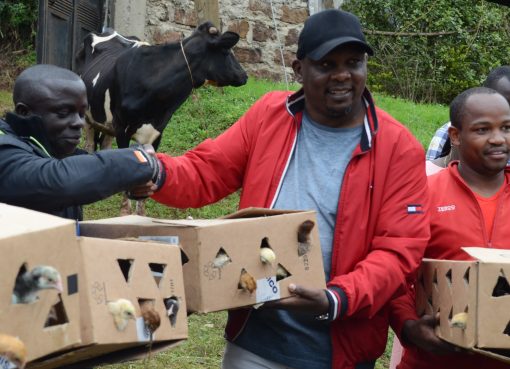A group of 10 students from Tom Mboya University in Homa Bay have invented a water purifying machine that will address perennial water shortages in the region through recycling.
In partnership with a Community Based Organization dubbed Wable, the students invented Maji-Safi (M-Safi) water purification machine to raise the water table for the community to bank on water.
This machine draws raw and unclean water from the water source where through solar energy, the water is purified and subdivided into three categories, that is, filtered, mineral or raw water (the normal quality). One thing is for sure, this project will prove to be a breakthrough towards solving water problems in the county which seemed impossible to achieve over the years.
Boniface Mwangi says the idea to come up with the project was pushed by the persistent water shortages in Homa Bay.
“As students, we felt that we needed a solution to the perennial water problems here. We have lake water which is accessible but not quality and clean enough for consumption as it should be,” he notes.
M-Safi is basically a distribution point of water where one can access water in one place.
In this project, water is pumped from the lake or any other water source such as a borehole to the filter which removes micro plastics from the water before it goes to the main tank.
The water undergoes a number of filtration processes including active filtration, pre-filtration and active carbon which removes smell and color from the water.
It is then pumped to the tank as distilled water before it is passed through activated carbon before undergoing an ultra-filtration process through Ultraviolet Rays-Lamp.
At this point, filtered water does not need to undergo any more filtration, unlike mineral water which has to again go through activated carbon before being subjected to another purification process using reverse osmosis or Nano filtration.
“After undergoing the purification process, the water is subdivided at the water junction into three, purified, mineral and raw water. Each category of water has its own tap where water is drawn from by the users. Unclean water can also be renewed,” he says.
Mwangi notes that the reason for the subdivision was because of the need to ensure water is fully utilized.
“The water is subdivided according to the level of purification and depending on the different levels of usage. This is to allow the residents to choose from the three qualities of water depending on their need,” notes the student.
Filtered water is used in the kitchen, mineral water is for drinking purposes while raw water, according to the student, can be used in other areas where the cleanliness of water is not prioritized.
“The raw water is not visibly unclean and can be used in car wash, mineral water is purely for drinking while filtered water can be used in the kitchen,” he says.
The group further digitized the project to allow the community members access water services electronically to limit the involvement of cartels where they came up with an M-Safi ATM machine.
The incorporation of the ATM which is a self-contained unit for dispensing the three qualities of water was to aid in the payment by the users through M-Pesa services.
“M-Safi is a digital machine where one can access water in one place. The ATM consists of an online system with an integrated payment structure arranged into a steel box,” says Bonnie.
To acquire water, says Mwangi, one has to go to the machine, choose the quality of water he or she requires before paying through Mpesa using a mobile phone.
“One does not need to have a smartphone to access water, even a mulika mwizi or kabambe phone is enough for that,” he clarifies.
After the payment, the tap with the quality of water paid for will light up, an indication that one can now refill his or her container by pressing the button.
The ATM is made in such a way that one cannot get water that exceeds the amount paid for nor can he get less water than what he paid for. Immediately the capacity paid for is reached, the tap automatically closes.
The Director Wable Organization Odak Onyango said that Tom Mboya University students are the brains of the project.
“Tom Mboya comes as a very handy institution; they are our knowledge partner. The students help us with research, like when we came up with a water ATM, they helped us understand the financial situation of the community and the kind of water to produce,” says Onyango.
The group of students from the institution carried out feasibility studies, data collection leading to a breakthrough that will provide a solution towards the ailing water infrastructure.
“Through the university, we managed to develop the whole concept of Wable and water ATM. The institution also helped in understanding that we should avoid using tokens,” notes Onyango.
He clarifies that M-Safi deals with water refilling and not bottling.
The director says the idea of Msafi was reached to help the community members by making water easily accessible to them especially in the dry season.
“Together with the students, we have produced an end-to-end solution to water as we are able to provide safe drinking water to the local community at a cheaper price,” he states.
Being a community driven organization, Wable wanted to build resilience in the community in times of hardship of climate change by ensuring affordable access to water by the locals.
“The decision regarding the water pricing lies with the community, if they want let’s say raw water for free then they will get just that. If they want filtered water at the normal Sh2 then we are okay with that,” he says.
This project is already operational in the Ogongo area and Lwanda within Suba North Sub-County.
20 liters of filtered water in Ogongo is sold at Sh2.50 while in Lwanda it goes at Sh5 while mineral water goes at Sh50 against the price of Sh300 from other refilling shops.
With the idea of banking on water, the money generated by the Community Based Organization (CBO) is put to use in other development projects beneficial to the community including regenerative agriculture.
The director notes that Wable stands for water banking and that their intention is not to sell water but to make the residents believe they are actually banking.
“At one point we saw the importance of actually banking on this water, the reason for coming up with table banking. Wable is water table, table banking. Our intention is that when people buy water, they actually see it as banking,” Onyango adds.
Ogongo water point draws water from the borehole while the Lwanda water point utilizes water from the lake.
However, the Lwanda water point has two taps providing filtered water and one for mineral water. “As the lake is just meters away from us, we only produce two types of water because raw water can instead be drawn directly from the lake,” he explains.
The director confirms that they have had a number of dialogues with the County Government of Homa Bay as a partner to roll out the project in 50 areas within the county.
He says the coming months will see to the setting up of M-Safi water points in 50 beaches.
Onyango is optimistic that Homa Bay County can be the next producer of water if stakeholders come together for that course.
Before the inception of Maji Safi, the residents of Lwanda village relied on unprocessed lake water for their daily water usage, where they used this water in cooking, washing and drinking, which in the long run predisposed them to water-borne diseases.
Lwanda Beach Management Unit (BMU) Chairperson Michael Odida says the water point has helped them avert water-borne diseases which previously was prevalent among the residents.
He notes that with Maji-Safi, they are no longer exposed to stomach ailments because of the quality of water available by the organization.
Once rolled, this project is expected to fill the gap left by Homa Bay Water and Sanitation Company (HOMAWASCO) which has over the time dictated the frequency of water supply in the region.
By Sitna Omar





